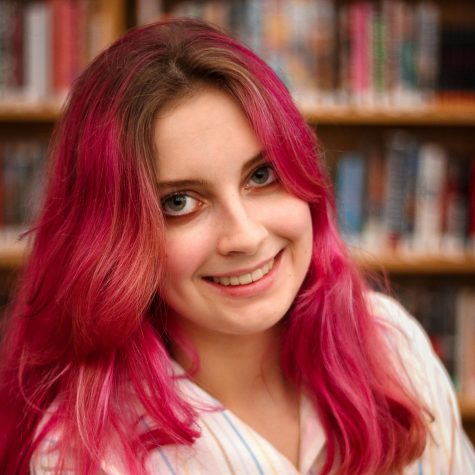America has its fair share of stuffy rules and social norms, but “Halloween is the one time of year a girl can dress like a total slut and no other girl can say anything about it.” Cady Heron from “Mean Girls” was sort of right. Maybe not about the “slut” comment, but more so about self-expression and the costume aspect of the holiday.
The character Bill from “Freaks and Geeks,” set in the early 1980s and filmed in the late ‘90s, dressed up as the Bionic Woman from the 1970s hit series “The Bionic Woman” in the show’s iconic Halloween episode. One scene shows Bill acting out the character in his mirror as he gets ready, gesturing toward his DIY breasts and saying, “No, these are not bionic, these are all me.” At any other time of the year, a typical person would likely turn their head at a teenage boy dressed as the Bionic Woman, especially in the ‘80s, considering societal rules on gender expression and conformity. Halloween is usually an exemption from these every-day standards, because it allows and even encourages children and teens alike to get creative and express their personal interests wholeheartedly. But why is self-expression limited to this day—and why are there still limits to this self-expression?
Halloween has evolved from its ancient roots in the background of increased American capitalistic practices. If someone were to get their hands on photos of their American great-grandparents’, grandparents’ or even Gen X parents’ old Halloween costumes, they would probably find they were actually terrifying, as shown by an article from allthatisinteresting.com, which provides a gallery of children and adults adorned in eerie, intricate masks and costumes. Even in the early 20th century, Americans were still practicing the holiday’s pagan roots. Traditions travelled to America when Irish and Scottish immigrants settled in the 18th century—the most prominent was dressing up in homemade costumes for the sole purpose of warding off evil spirits, according to an article from CNN. Children and teenagers wore masks to stay in disguise while partaking in mischievous activities. While this is still commonplace in modern-day Halloween traditions, the costume aspect is now more commercialized. Beginning in the 1920s and ‘30s and ensuing decades after, costumes became more reliant on pop culture, and companies sought this opportunity to license and profit off of costumes. The CNN article refers to the holiday as more “exhibitionist” now, meaning costumes are of a larger variety and more risque. Since the magnification of capitalism under all aspects of society, including holidays, Halloween is now a day filled with pop culture references and a justification to throw parties.
A holiday that prides itself on personal expression has become socially exercised itself. Take Bill and the rest of the geeks in “Freaks and Geeks,” for example. In the Halloween episode, Bill and Neal reluctantly agree to go trick-or-treating with Sam even though they are now “old” high school freshmen. They are excited at first, but soon feel ridiculed when parents and other teenagers give them looks of disapproval for deciding to dress up and go trick-or-treating at their age. This occurrence in the episode points to a phenomenon regarding age and Halloween expectations. Since the ‘40s, expression in the form of Halloween celebrations is more encouraged for children. Most media represents the holiday by showing kids trick-or-treating, parents reluctantly tagging along and teenagers and young adults dressing up to party or break into and TP buildings—”Mean Girls,” “My So Called Life” and “Freaks and Geeks” are all examples of the latter. A comic from The Oatmeal effectively exemplifies the different stages of Halloween celebration, from portraying children as the hyper, candy-crazed stage, to elderly, grouchy people handing out bad candy. Congruently, the media often dictates or parodies societal expectations, not excluding holidays in this act. The intended irony of the “Mean Girls” Halloween bit is that girls and women are essentially collectively expected to dress a certain way despite the history of Halloween as an inherently morbid holiday. This is so distant from the holiday’s roots that it’s practically comical for groups to argue about age expectations and limits in self-expression in correlation with holidays, which are supposedly here to bring people closer to their cultures and others. It is strange to create arbitrary guidelines on what people should or shouldn’t wear, especially when gender norms and expectations are enforced.
It is inevitable that a capitalist society would advertise a certain premise of expected social behaviors during holidays for the sake of profitable outcomes, but what if individual Americans defied these odds? They could reject the commodification of such pure pleasures and change the year’s one allocated period of quirkiness to be all year long. After all, one of our best holidays deserves more running time. Who’s to prevent Bill from dressing up as the Bionic Woman, and on Nov. 1 for that matter?
Do you like to dress up for Halloween? Let us know in the comments below.















































































